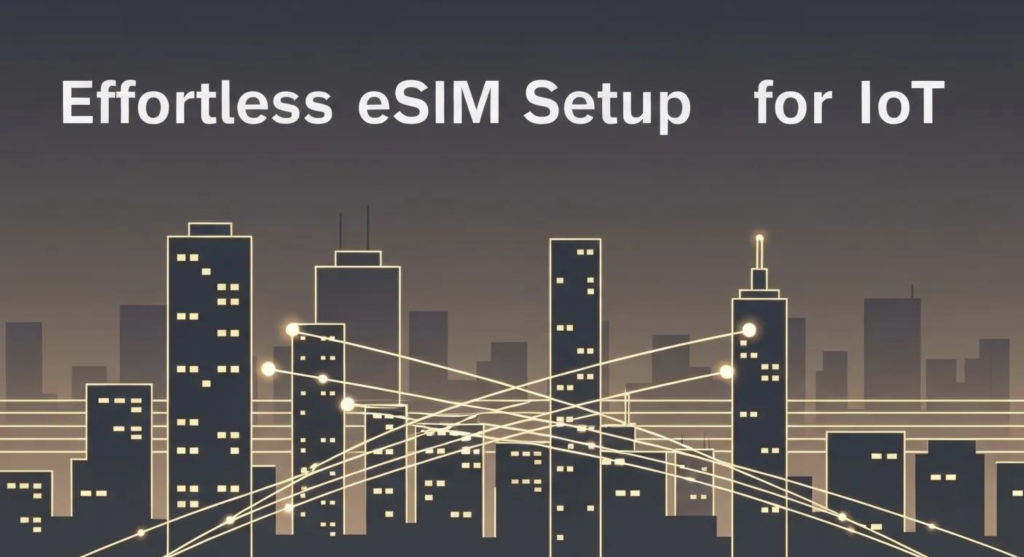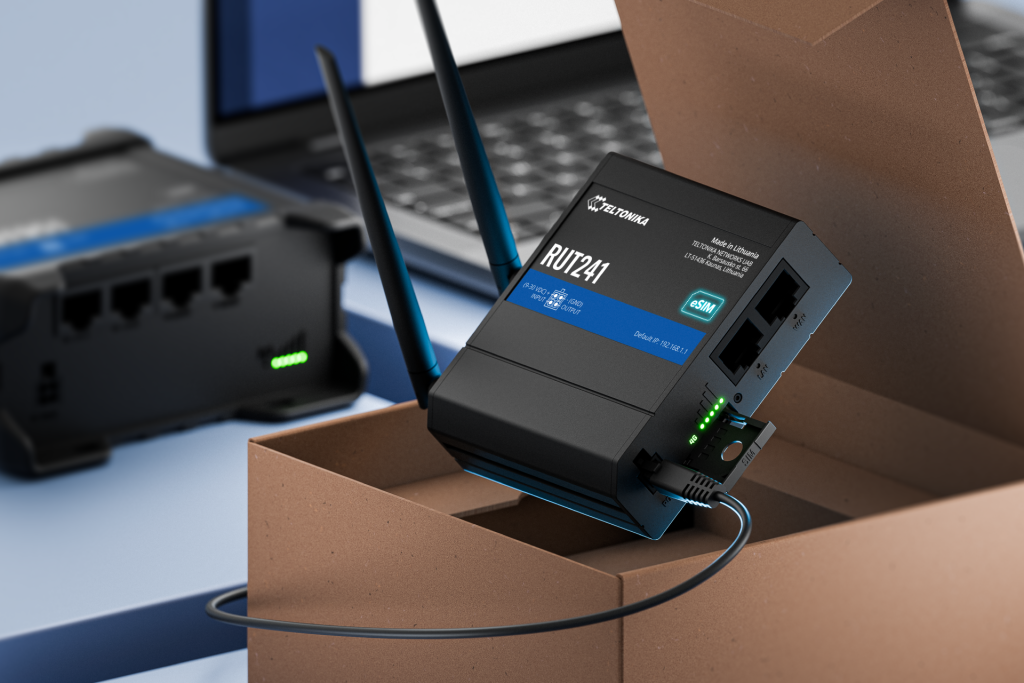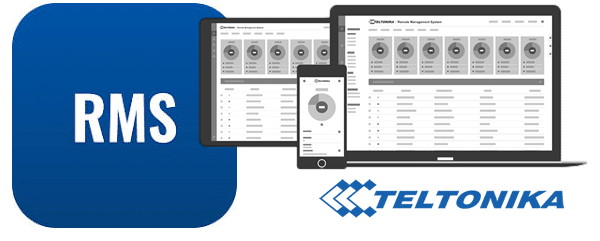
A common initial hurdle for industrial IoT fleets is the complexity of SIM provisioning, which can delay deployments and inflate on-site expenses. This guide reveals how Teltonika Networks’ embedded SIM Bootstrap profile provides instant network access, zero-touch activation, and remote management via RMS, empowering your routers from day one. You’ll learn what a bootstrap profile is, how it interacts with SM-DP servers, and which Teltonika routers are compatible. We’ll then walk you through quick WebUI steps, automated activation flows, and RMS-based provisioning. Finally, we’ll explore the key advantages for deployments, compare device features, address common troubleshooting scenarios, confirm industry-standard compliance, and point you to further support resources.
What is the eSIM Bootstrap Profile and How Does It Work?
An eSIM Bootstrap profile is a compact, pre-loaded network credential residing on a Teltonika eSIM, enabling initial connectivity without a physical SIM card or prior internet access. This clever mechanism allows routers to power up and establish a low-data link to automatically fetch the complete operator eSIM profile, eliminating manual provisioning steps. Adherence to embedded eUICC standards ensures the bootstrap profile can securely connect to the SM-DP server, while encryption and DNS-restricted traffic safeguard the device during this crucial first-mile activation. Grasping this fundamental concept paves the way for the zero-touch deployment and remote provisioning detailed in the following sections.
Beyond its initial definition, the bootstrap process unfolds in a clear sequence: device power-on, a limited-data handshake, SM-DP server authentication, and the full profile download. Each stage relies on Teltonika’s robust firmware logic to seamlessly transition from the bootstrap to the operator profile at the opportune moment. Because the bootstrap profile is restricted to carrying only DNS, RMS, DHCP, and SM-DP traffic, it stays well under a 10 MB limit and remains valid for one year from its manufacturing date. This ensures Teltonika routers consistently meet GSMA eUICC guidelines while guaranteeing smooth profile recovery and fallback capabilities.
What is a Bootstrap Profile in Teltonika eSIM Routers?
Within Teltonika routers, a bootstrap profile serves as a pre-configured eSIM credential that activates immediately upon power-on, granting essential minimal connectivity to reach the subscription manager. This profile is housed within the device’s embedded Universal Integrated Circuit Card (eUICC) and distinguishes itself from full operator profiles through its size and specific function. It contains essential APN data and the SM-DP server address, enabling the router to authenticate itself and retrieve the complete eSIM package. By embedding this profile during the manufacturing process, Teltonika Networks ensures that every router is capable of self-provisioning in remote or unprepared environments, ready to download operator profiles without any human intervention.
How Does the Bootstrap Process Enable Zero-Touch Deployment?
Teltonika’s bootstrap process significantly streamlines manual setup by automating the entire journey from factory settings to full operational connectivity.
- Device Startup: The router powers on and checks for the presence of a physical SIM card.
- Bootstrap Activation: The embedded eUICC utilizes the bootstrap profile to establish a secure connection to the SM-DP server.
- Profile Download: The complete operator profile is downloaded via a restricted 10 MB data channel.
- Network Switch: The router seamlessly transitions to the operator eSIM profile, enabling unrestricted data traffic.
This carefully orchestrated sequence delivers true zero-touch deployment by eliminating the need for on-site SIM insertion and configuration, thereby accelerating rollouts and reducing logistical complexities.
What Are the Data Limits and Validity of the Bootstrap Profile?
The bootstrap profile is subject to a strict 10 MB data limit and remains valid for one year from the manufacturing date. Within this allowance, only essential traffic—specifically RMS, SM-DP, DNS, and DHCP—is permitted to traverse the network for the purpose of downloading full profiles. This restriction on data types effectively prevents misuse and ensures compliance with eUICC best practices. After one year, the bootstrap credential automatically expires, prompting routers to rely on pre-downloaded operator profiles or requiring manual provisioning if full profiles were not successfully obtained. A clear understanding of these limitations is crucial to avoid unexpected activation failures and maintain uninterrupted connectivity.
| Profile Purpose | Data Allowance | Expiration |
|---|---|---|
| Bootstrap Profile | 10 MB | 1 year from manufacturing date |
How Does the Bootstrap Profile Connect to the SM-DP Server?
The bootstrap profile contains the necessary SM-DP server credentials, directing the router’s eUICC to the correct subscription manager endpoint. Upon powering up, the eUICC initiates an encrypted HTTPS session to the SM-DP server, authenticates itself using onboard certificates, and requests the operator eSIM package. Teltonika’s sophisticated firmware manages the DNS resolution, TLS negotiation, and profile download process over a strictly controlled channel. Once the full profile is successfully installed, the session is terminated, and the router registers on the designated mobile network, thereby completing the bootstrap cycle and enabling standard data traffic.
How to Activate Your Teltonika Router eSIM Using Bootstrap Setup?

Activating an eSIM via bootstrap on Teltonika routers can be accomplished instantly through the WebUI, automatically after one hour, or remotely using RMS for a truly zero-touch deployment. The optimal method depends on the specific field conditions and available access points. WebUI activation is ideal for on-site technicians, automatic activation is perfect for unattended devices, and RMS provisioning empowers centralized teams to manage global fleets efficiently. Mastering these diverse options ensures your industrial IoT installations go live without any delays.
Once you’ve selected your preferred activation path, it’s essential to confirm that your router model supports eSIM bootstrap and that RMS access is properly provisioned if remote management is a requirement. A quick verification of the firmware version and power stability can prevent activation errors that might occur if the bootstrap process falls back to physical SIM checks. With all prerequisites in place, you can proceed with the precise activation flow that best suits your needs.
Which Teltonika Routers Support eSIM Bootstrap Activation?
Teltonika’s RUT2- and RUT9-series routers, alongside the RUT241 eSIM and select RUTM models, are equipped with embedded eUICC and bootstrap profiles.
- RUT241 eSIM: An industrial LTE Cat 4 router featuring the essential bootstrap capability.
- RUT2-series: Compact routers designed for demanding outdoor and harsh environment applications.
- RUT9-series: High-throughput gateways offering dual cellular support for enhanced connectivity.
- RUTM30-eSIM & RUTM54-eSIM: Industrial models specifically optimized for automation and SCADA systems.
How to Perform Instant eSIM Activation via Teltonika WebUI?
Instant WebUI activation is a swift process, typically completed in under five minutes, and involves three straightforward steps:
- Access the router’s WebUI by logging in with your administrator credentials and navigate to Network → eSIM.
- Select the “Download Bootstrap Profile” option and confirm the action.
- Monitor the progress; once the full operator profile is displayed, save the changes and reboot the router.
How Does Automatic Activation Work Without Manual Intervention?
Teltonika routers are designed to automatically detect the absence of a physical SIM card and initiate the bootstrap activation process after approximately one hour. The embedded firmware then begins the SM-DP handshake in the background, downloads the complete eSIM package, and seamlessly switches network profiles without requiring any user input. This autonomous mode is particularly advantageous for sealed installations or remote sites where physical access is impractical, ensuring that devices independently connect to carrier networks as soon as they are powered on.
How to Use Teltonika RMS for Remote eSIM Provisioning and Zero-Touch Deployment?

Teltonika’s Remote Management System (RMS) empowers administrators to remotely push bootstrap activation commands over-the-air to any registered router.
- Within the RMS portal, select the target devices and initiate the “Bootstrap eSIM” operation.
- RMS queues the task and diligently monitors its completion status through secure MQTT or HTTPS channels.
- Administrators receive timely notifications of success or failure and can easily trigger retries if necessary.
By integrating bootstrap commands directly into RMS workflows, large-scale IoT fleets can achieve genuine zero-touch provisioning, with all eSIM profiles managed centrally from initial deployment through to decommissioning.
What Are the Key Benefits of Using Teltonika eSIM Bootstrap for IoT Deployments?
Embedding a bootstrap profile within Teltonika routers fundamentally transforms complex SIM logistics into streamlined, over-the-air operations. The primary advantages include significantly simplified rollouts, a drastic reduction in configuration errors, and the complete elimination of on-site SIM swaps. Whether you are deploying hundreds of sensors for smart agriculture or critical gateways for transportation networks, the bootstrap feature ensures that every device can self-provision its operator profile without any human intervention.
Additional benefits focus on enhancing connectivity resilience and bolstering security. Automatic network failover between eSIM profiles ensures continuous uptime even in areas with fluctuating coverage. The embedded eUICC and encrypted SM-DP sessions effectively thwart tampering and unauthorized profile modifications. Centralized RMS management dramatically cuts operational costs by minimizing the need for costly truck rolls and reducing plastic SIM card waste, thereby contributing to more sustainable IoT initiatives.
- Enhanced reliability through multi-profile failover and seamless roaming capabilities.
- Simplified scalability to accommodate growing fleets across diverse regions without manual SIM handling.
- Improved security via embedded SIM encryption and robust remote lock/unlock features.
- Significant cost reductions in logistics, inventory management, and on-site support visits.
- Minimized environmental impact through the elimination of disposable plastic SIM cards.
These compelling benefits firmly establish Teltonika’s eSIM Bootstrap as a foundational technology for modern, sustainable IoT connectivity, driving down the total cost of ownership while simultaneously boosting deployment speed and network resilience.
Which Teltonika eSIM Routers Support Bootstrap and What Are Their Features?
Teltonika’s flagship RUT241 eSIM offers robust LTE Cat 4 throughput, an embedded eUICC, PoE+ support, and RMS compatibility, all within a compact industrial form factor. The RUT2-series extends bootstrap capabilities to ruggedized outdoor and vehicle-mounted routers, featuring IP65 protection and optional GNSS tracking. RUT9-series gateways provide dual-cellular redundancy and advanced VPN functionalities, making them ideal for high-availability scenarios. The RUTM models are specifically engineered for automation applications, boasting DIN-rail mounts and extended operating temperature ranges.
| Model | Key Feature | Primary Benefit |
|---|---|---|
| RUT241 eSIM | Embedded eUICC & PoE+ | Instant connectivity and simplified power delivery |
| RUT2-series | IP65-rated enclosure | Dependable operation in harsh environmental conditions |
| RUT9-series | Dual cellular & VPN support | High-availability and secure data transmission pathways |
| RUTM54-eSIM | DIN-rail mount & wide temperature range | Resilience for industrial automation deployments |
What Are Common Issues in Teltonika eSIM Bootstrap Setup and How to Troubleshoot Them?
Occasionally, routers might report no internet connectivity following bootstrap activation if DNS or DHCP traffic is inadvertently blocked by network firewalls. Verifying that only RMS, DNS, and SM-DP ports are open will effectively resolve this connectivity gap. If the bootstrap profile expires before a full download is completed, manual profile provisioning via the WebUI or RMS can be used to restore service continuity.
- Ensure firewall rules are configured to permit RMS, SM-DP, and DNS traffic essential for bootstrap activation.
- Confirm that your firmware version meets the minimum requirements for eSIM bootstrap functionality.
- Utilize the RMS log viewer to pinpoint any handshake errors encountered with the SM-DP server.
- Reissue the bootstrap activation command via RMS for routers that become stuck in a limited connectivity state.
By diligently following these troubleshooting steps, network teams can maintain consistent bootstrap performance and achieve rapid issue remediation across their global IoT deployments.
How Does Teltonika’s eSIM Bootstrap Align with Industry Standards and Future Trends?
Teltonika’s integration of bootstrap profiles into its router offerings is fully aligned with GSMA’s eUICC specifications, including SGP.22, SGP.31, and SGP.32, ensuring seamless interoperability and robust security compliance for embedded SIM deployments. The utilization of standardized SM-DP server workflows and encrypted profile downloads actively supports global operator adoption, while eUICC certification guarantees adherence to evolving digital SIM mandates.
Looking ahead, the development of modular eSIM architectures and integrated iSIM solutions promises even greater miniaturization and enhanced cost efficiency. Teltonika Networks is actively exploring advanced features such as multi-profile orchestration and AI-driven network selection to optimize connectivity in edge computing scenarios. These forthcoming innovations will further simplify IoT rollouts, enabling devices to autonomously select carriers and dynamically tailor profiles based on real-time performance and cost metrics.
Where to Find Additional Resources and Support for Teltonika eSIM Bootstrap Setup?
Teltonika Networks provides comprehensive eSIM configuration examples and detailed step-by-step guides within its online documentation hub, complete with WebUI screenshots and RMS workflow demonstrations. Administrators can access in-depth RMS eSIM management tutorials directly within the RMS portal’s knowledge base, which thoroughly explains remote provisioning operations. For direct assistance with bootstrap activation or complex troubleshooting, Teltonika’s dedicated global support team is readily available to offer expert technical guidance and provide necessary firmware updates.
By actively engaging with these valuable resources, your team can fully leverage the extensive capabilities of eSIM Bootstrap and stay consistently updated with the latest firmware enhancements and best practices for secure, zero-touch IoT connectivity.
Routers equipped with bootstrap profiles deliver unparalleled deployment speed, enhanced security, and significant cost efficiencies for industrial IoT applications. By mastering Teltonika’s WebUI, RMS, and the core concepts of bootstrap, your fleet will achieve resilient, scalable connectivity right from the initial power-on. Continuous alignment with GSMA eUICC standards and emerging industry trends positions your organization to fully capitalize on the next generation of embedded SIM innovations.
Shop Teltonika Routers at 5Gstore or if you are looking for a Teltonika Distributor, be sure to check out the Teltonika offerings at 5Gstore.com

